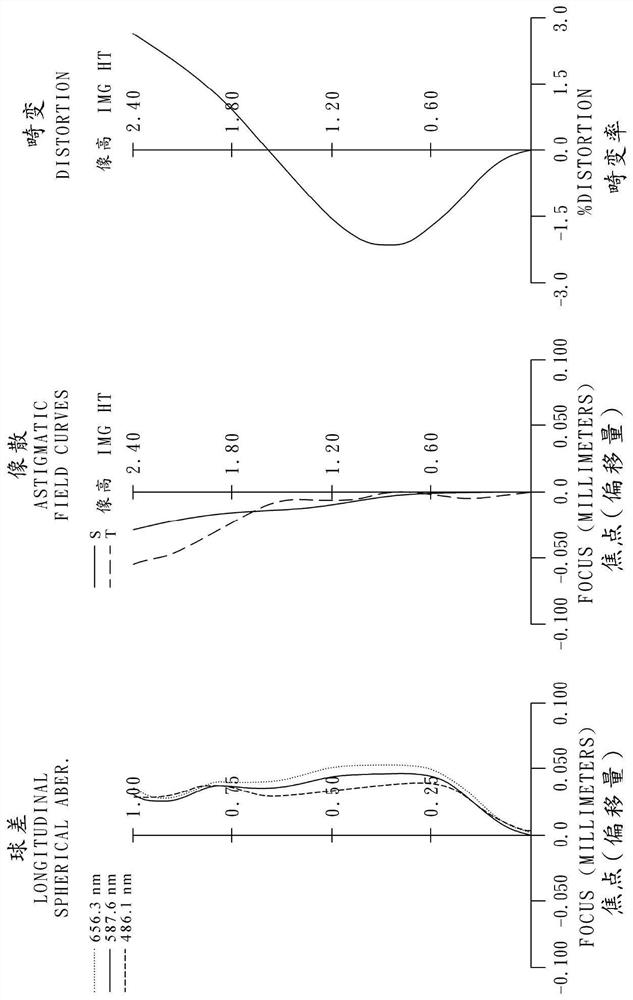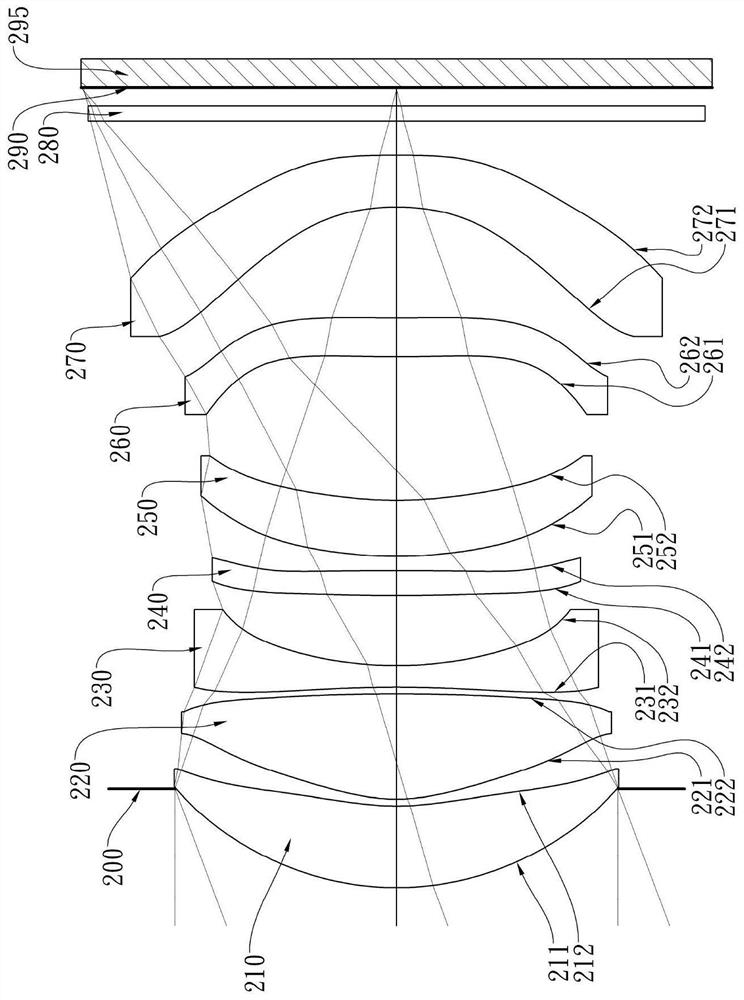Image-taking optical lens, image-taking device and electronic device
A technology of optical lenses and lenses, which is applied in the direction of optics, optical components, instruments, etc., to achieve the effect of reducing the size of the lens
- Summary
- Abstract
- Description
- Claims
- Application Information
AI Technical Summary
Problems solved by technology
Method used
Image
Examples
no. 1 example 》
[0195] Please refer to the first embodiment of the present invention Figure 1A , for the aberration curve of the first embodiment, please refer to Figure 1B . The imaging device of the first embodiment includes an imaging optical lens (not otherwise labeled) and an electronic photosensitive element 190. The imaging optical lens includes an aperture 100, a first lens 110, a second lens 120, The third lens 130 , the fourth lens 140 , the fifth lens 150 , the sixth lens 160 and the seventh lens 170 , wherein there is no interpolation lens between the first lens 110 and the seventh lens 170 .
[0196] The first lens 110 has a positive refractive power and is made of plastic. The object side 111 is convex at the near optical axis, and the image side 112 is concave at the near optical axis. Both the object side 111 and the image side 112 are aspherical. , which has at least one inflection point like side 112;
[0197] The second lens 120 has a positive refractive power, and its ...
no. 2 example 》
[0248] Please refer to the second embodiment of the present invention Figure 2A , for the aberration curve of the second embodiment, please refer to Figure 2B . The imaging device of the second embodiment includes an imaging optical lens (not another number) and an electronic photosensitive element 290. The imaging optical lens includes an aperture 200, a first lens 210, a second lens 220, The third lens 230 , the fourth lens 240 , the fifth lens 250 , the sixth lens 260 and the seventh lens 270 , wherein there is no interpolation lens between the first lens 210 and the seventh lens 270 .
[0249] The first lens 210 has a negative refractive power and is made of plastic. The object side 211 is convex at the near optical axis, and the image side 212 is concave at the near optical axis. Both the object side 211 and the image side 212 are aspherical. , which has at least one inflection point like side 212;
[0250] The second lens 220 has a positive refractive power, and its...
no. 3 example 》
[0266] Please refer to the third embodiment of the present invention Figure 3A , for the aberration curve of the third embodiment, please refer to Figure 3B . The imaging device of the third embodiment includes an imaging optical lens (not another number) and an electronic photosensitive element 390, and the imaging optical lens includes a first lens 310, an aperture 300, a second lens 320, The third lens 330 , the fourth lens 340 , the fifth lens 350 , the sixth lens 360 and the seventh lens 370 , wherein there is no interpolated lens between the first lens 310 and the seventh lens 370 .
[0267] The first lens 310 has a positive refractive power and is made of plastic. The object side 311 is convex at the near optical axis, the image side 312 is concave at the near optical axis, and both the object side 311 and the image side 312 are aspherical. , which has at least one inflection point like the side 312;
[0268] The second lens 320 has a positive refractive power, and...
PUM
 Login to View More
Login to View More Abstract
Description
Claims
Application Information
 Login to View More
Login to View More - R&D
- Intellectual Property
- Life Sciences
- Materials
- Tech Scout
- Unparalleled Data Quality
- Higher Quality Content
- 60% Fewer Hallucinations
Browse by: Latest US Patents, China's latest patents, Technical Efficacy Thesaurus, Application Domain, Technology Topic, Popular Technical Reports.
© 2025 PatSnap. All rights reserved.Legal|Privacy policy|Modern Slavery Act Transparency Statement|Sitemap|About US| Contact US: help@patsnap.com



